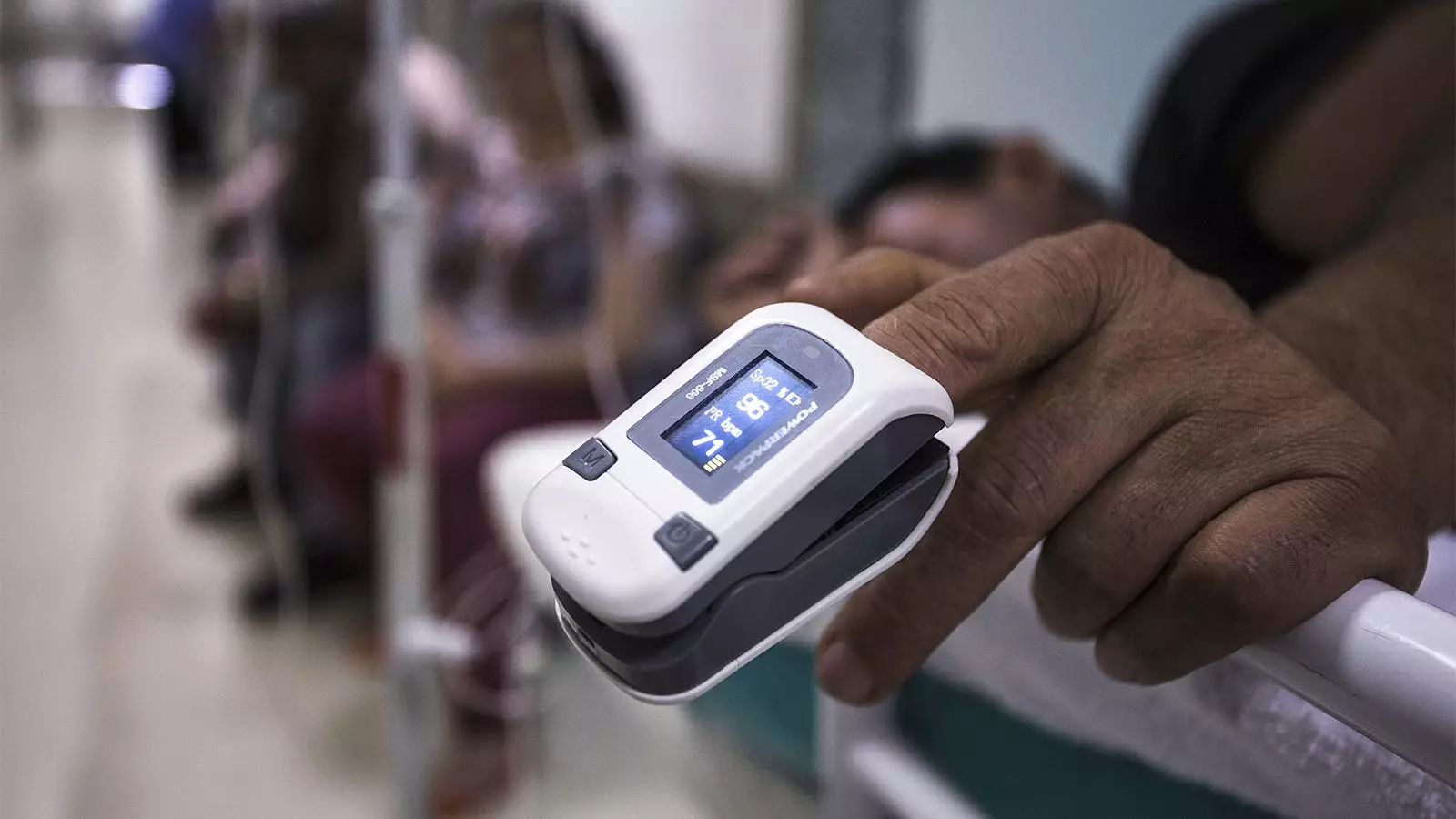The accuracy of pulse oximeters has recently been called into question, as a retrospective cohort study revealed that pulse oximetry overestimates oxygen saturation levels. This led to delayed delivery of COVID-19 therapy and an unrecognized need for therapy among patients, particularly among the Black population. These findings shed light on the impact of pulse oximeter inaccuracies on clinical decision-making and patient outcomes, emphasizing the need for further scrutiny in healthcare settings.
The study, conducted by Tianshi David Wu, MD, MHS, and colleagues at Baylor College of Medicine, analyzed data from over 24,000 patients with concurrent pulse oximeter saturation (SpO2) and arterial oxygen saturation (SaO2) measurements. The researchers found that patients with an initially unrecognized need for COVID therapy were 10% less likely to receive treatment, regardless of race. Furthermore, this group had higher odds of readmission. Interestingly, the inaccuracy of pulse oximeters was not limited to any specific racial group and affected patients of all races.
Racial Disparities in Pulse Oximetry Accuracy
A subset of the patient population consisted of 8,635 individuals who did not have an immediate need for COVID therapy. Among this group, Black patients were significantly more likely than white patients to have pulse oximetry values that did not indicate a need for therapy. These disparities highlight the importance of considering racial factors when assessing the accuracy of pulse oximeters. However, it is crucial to note that despite these racial differences, both Black and white patients experienced similar delays in receiving COVID-19 medication.
The study’s findings underscore the need for physicians to critically evaluate pulse oximeter readings and not solely rely on those values to make important medical decisions. The researchers recommend caution when interpreting borderline values reported by pulse oximeters, as they may not always reflect the true oxygen saturation levels. Physicians should consider additional diagnostic tools and clinical judgment to ensure accurate assessments and equitable care for all patients, particularly those from underrepresented minority groups.
William Padula, PhD, from the University of Southern California, suggests that limitations in pulse oximetry accuracy stem from inadequate representation of diverse patient populations in previous trials. Health technology that demonstrates efficacy in controlled settings may not perform equally well when exposed to real-world variability. Padula emphasizes the need for health systems to allocate resources to collect multiple data points and employ various diagnostic tools to improve accuracy and equity in healthcare delivery.
While the study provides critical insights into the overestimation of oxygen saturation by pulse oximeters, several limitations should be acknowledged. The researchers note that factors such as hospital staffing, therapy availability, and practice patterns might have influenced the time to treatment administration. Additionally, the study relied on self-reported race and ethnicity, which may not fully capture the diversity of skin tones that impact pulse oximeter accuracy. Future research should consider these factors to obtain a more comprehensive understanding of the issue.
Inaccuracies in pulse oximetry measurements have significant implications for patient care, particularly during the COVID-19 pandemic. The study highlights the need for healthcare professionals to critically examine pulse oximeter readings and not solely rely on them for treatment decisions. Additionally, racial disparities in pulse oximeter accuracy underscore the importance of addressing healthcare inequities and advancing health technology to ensure optimal care for all patients. By implementing multiple diagnostic tools and considering patient diversity, healthcare providers can improve the accuracy of assessments and deliver more equitable care.


Leave a Reply